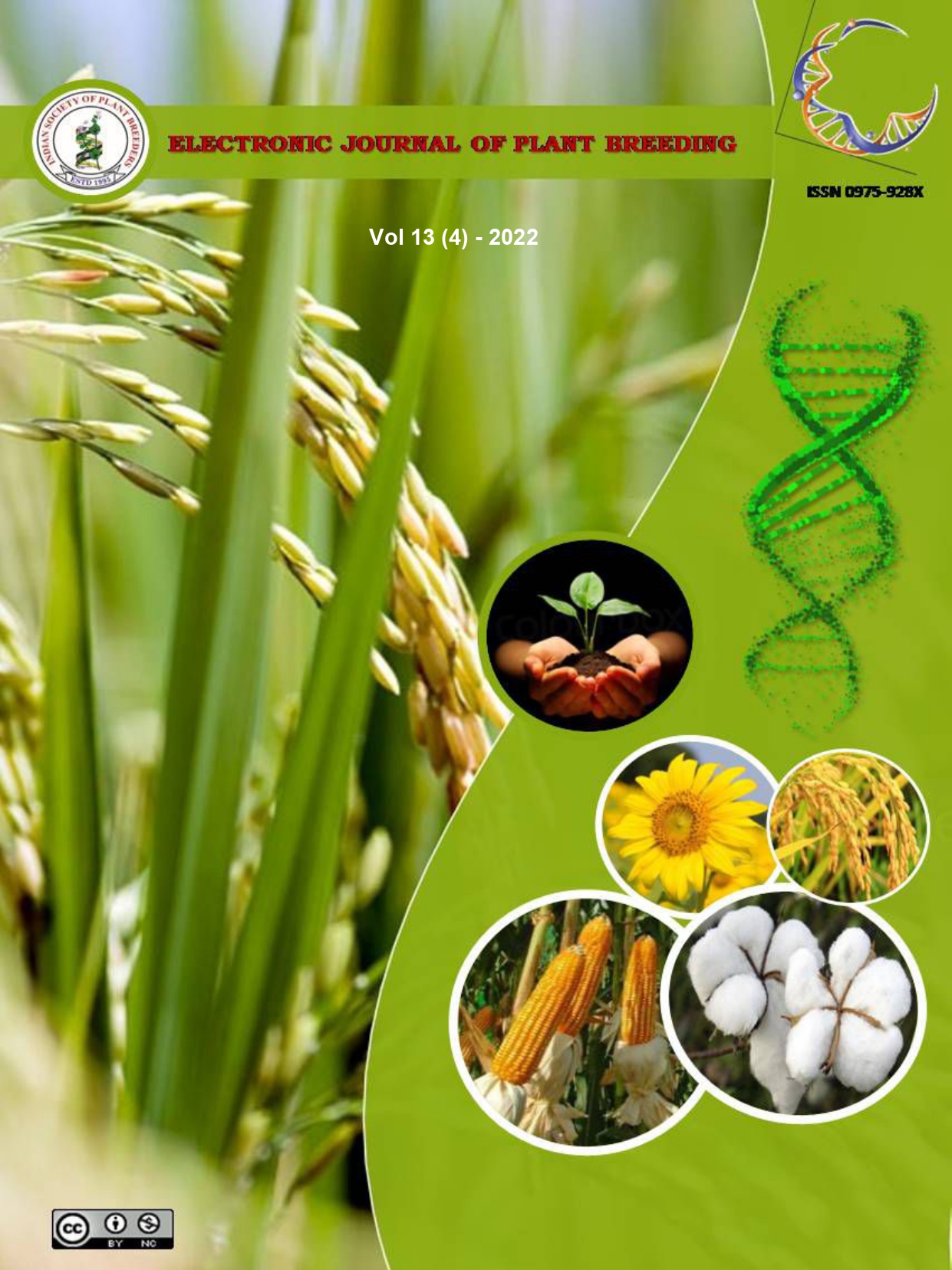Genetic analysis of diverse castor (Ricinus communis L.) genotypes based on seed related morphometric traits
Abstract
Diverse source of early genotypes is obligatory for breeding high yielding early castor (Ricinus communis L.) cultivars. One hundred and twenty-five medium duration genotypes including three checks were evaluated for the presence of genetic diversity and variability. Genetic distance, variance components and correlation coefficients were estimated for seven seed related quantitative traits. Significant genotypic differences were observed among the collections for these traits. High heritability and high genetic advance were noticed for seed length, seed breadth, Length/Breadth ratio, shelling percentage, 100 seed weight and seed yield per plant, thus mode of gene action reported was additive. Genetic diversity analysis based on dendrogram, phenogram and circular form grouped the entries into seven groups and it computed inter and intra cluster distance. Principal Component Analysis (PCA) revealed that the first three components cumulatively accounted for 72.57 per cent of the total variation. Seed yield per plant showed a significant association with shelling percentage and 100 seed weight. Also, direct effects were high and positive through seed breadth, Length/Breadth ratio and 100 seed weight. The promising genotypes identified (ICIRG 2272103 and RG 1673) and the information generated would be useful for breeding early/medium cultivars as well to understand the physiological mechanism related to earliness in castor.

